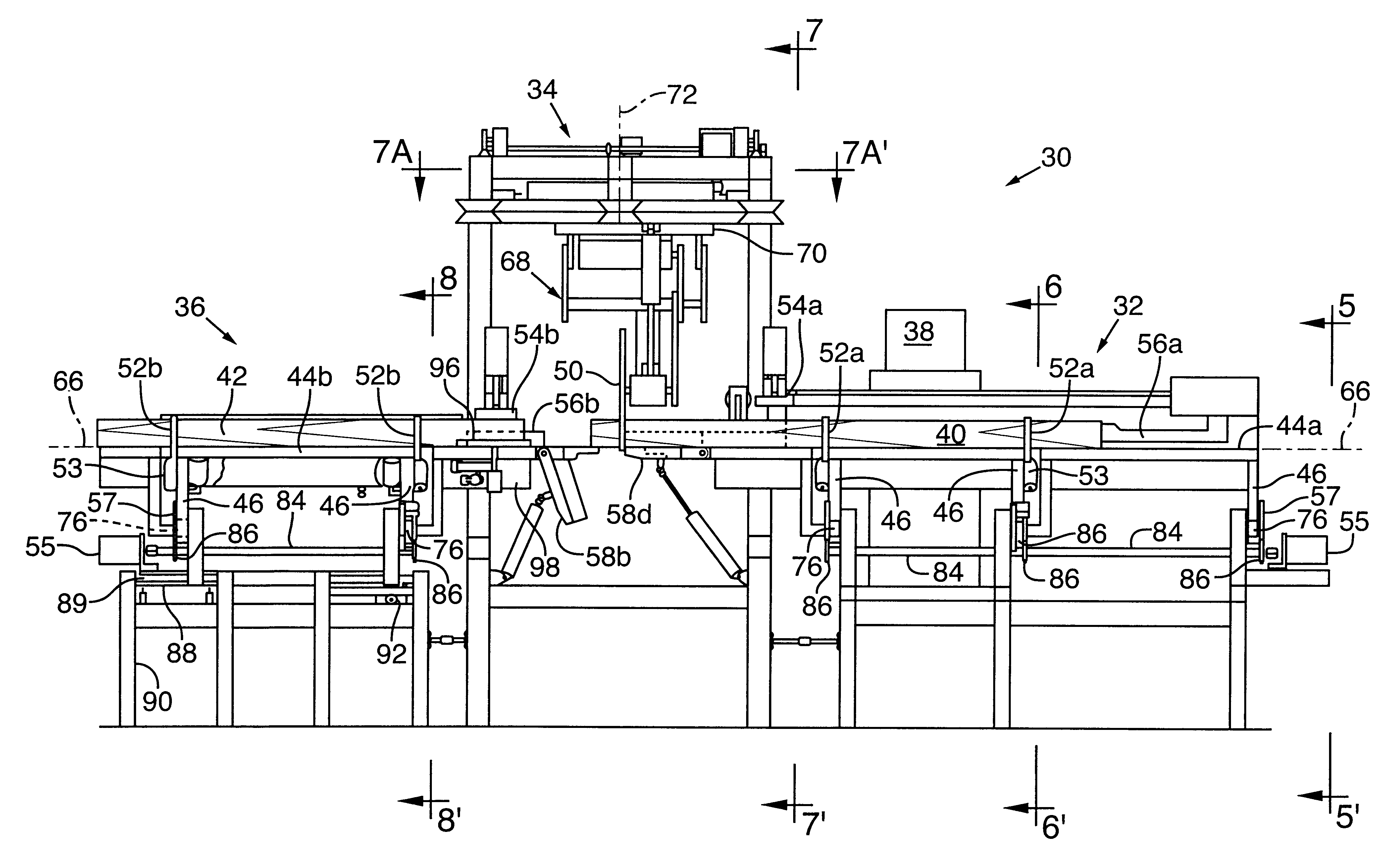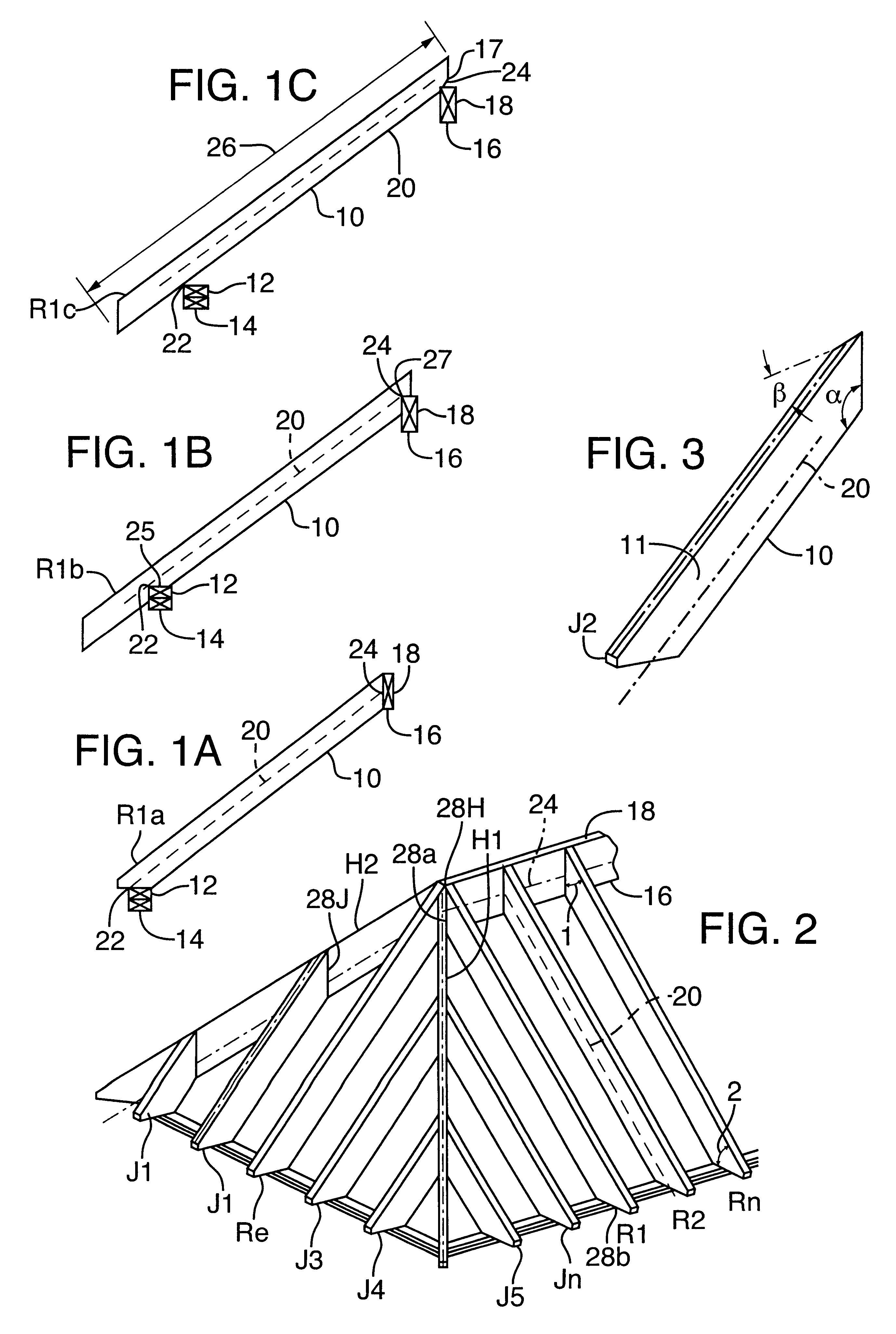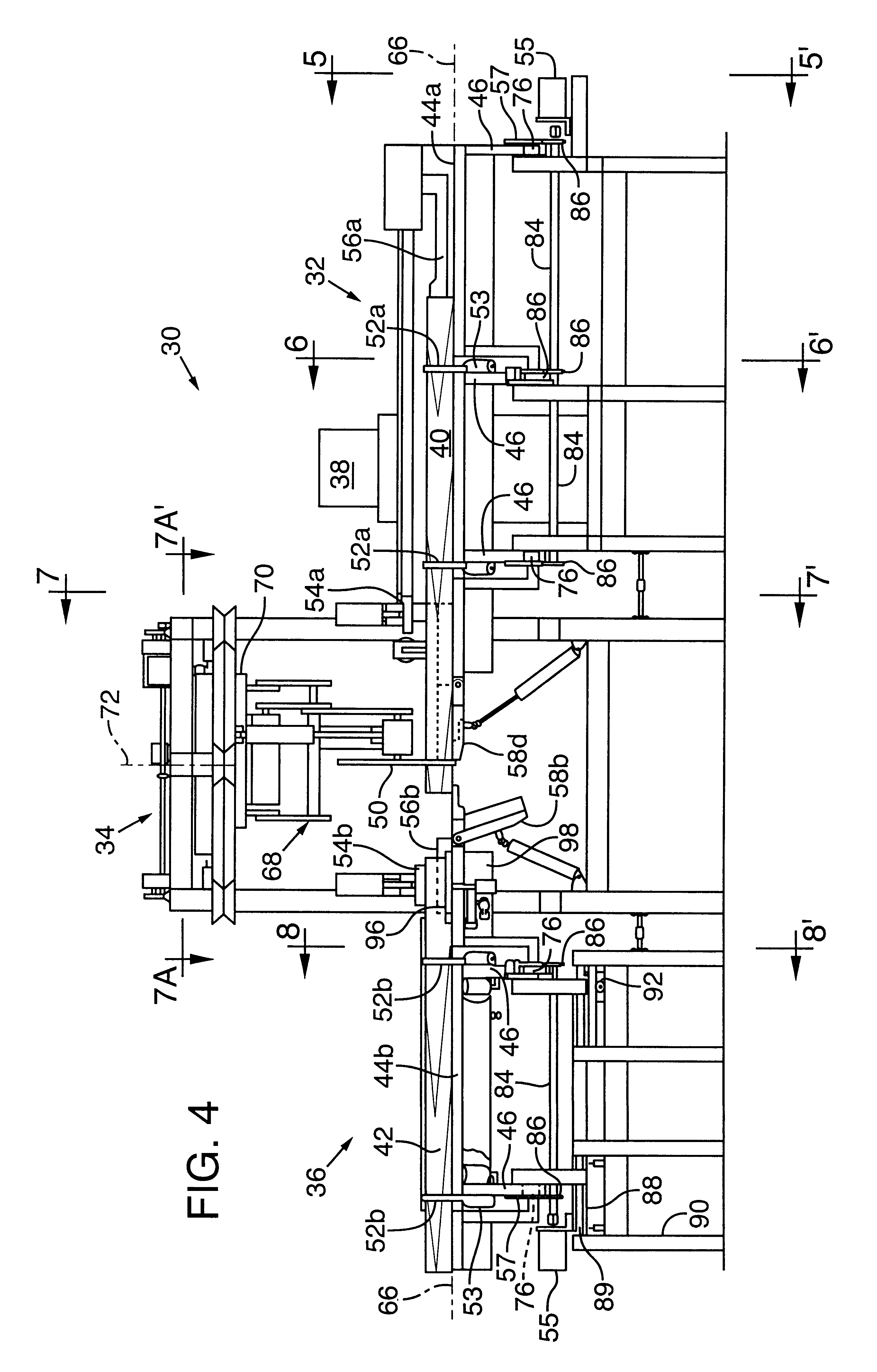Tiltable infeed and outfeed saw table
a saw table and infeed technology, applied in the direction of metal sawing devices, metal-working machine components, manufacturing tools, etc., can solve the problems of affecting the inability to meet the requirements of the cutting machine, etc., to achieve the effect of reducing the number of sawings, and improving the quality of the produ
- Summary
- Abstract
- Description
- Claims
- Application Information
AI Technical Summary
Benefits of technology
Problems solved by technology
Method used
Image
Examples
Embodiment Construction
Certain dimensions, and the way they are determined, are critical to understanding the novel functions and operations of the present invention.
FIGS. 1A-C show typical regular rafters R1a, R1b, and R1c for convenience, spanning from double top plates 14 to ridge beam 18. Each of these arrangements is used in construction, although 1A and 1B are used more often at the present time than 1C, which is an older method of construction. A detailed examination of each will help in understanding the concepts involved in determining rafter length.
In FIG. 1A, rafter R1a rests on double top plates 14 on the outer end, and on ridge beam 18 on the inner end. Lower edge 10 intersects inner edge 12 of double top plate 14 and lower edge 16 of ridge beam 18. "Measuring line" 20 is defined as a line, parallel to lower edge 10, extending across outer edge 22 of plate 14 to its intersection with the face of ridge beam 18. Line 24 on beam 18, which is parallel to lower edge 16 thereof, and passes through ...
PUM
| Property | Measurement | Unit |
|---|---|---|
| Angle | aaaaa | aaaaa |
| Dimension | aaaaa | aaaaa |
Abstract
Description
Claims
Application Information
 Login to View More
Login to View More - R&D
- Intellectual Property
- Life Sciences
- Materials
- Tech Scout
- Unparalleled Data Quality
- Higher Quality Content
- 60% Fewer Hallucinations
Browse by: Latest US Patents, China's latest patents, Technical Efficacy Thesaurus, Application Domain, Technology Topic, Popular Technical Reports.
© 2025 PatSnap. All rights reserved.Legal|Privacy policy|Modern Slavery Act Transparency Statement|Sitemap|About US| Contact US: help@patsnap.com



